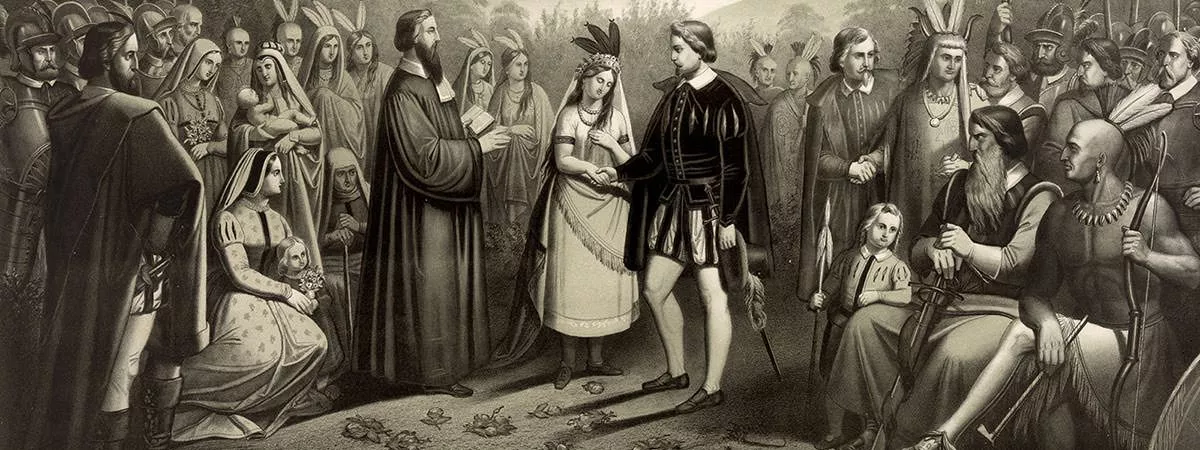Pocahontas was a native American woman who remains one of the best known cultural icons in the United States. However, her biography has been constructed through her association with the English colonists in America. Due to this, most of the parts of her life are still disputed or hotly debated among historians. First of all, Pocahontas was not her real name. She was in fact called Amonute when she was born. She was the daughter of a powerful tribal leader in the region near the Chesapeake Bay, where Richmond, Newport News, Norfolk and Virginia Beach are now located. The most well known story regarding Pocahontas is that she saved the life of English colonist Captain John Smith. Moreover, numerous depictions of her in art, literature and film show that the two were romantically involved. In fact, she most probably didn’t save his life and the two were, at best, friends. Know more about the real story of Pocahontas through these 10 interesting facts.
#1 POCAHONTAS WAS NOT HER REAL NAME
The actual name of Pocahontas, at the time of her birth around the year 1596, was Amonute. She was also called Matoaka, which means “flower between two streams”. According to some sources, this name was given to her as she was born between the two rivers of Mattaponi and Pamunkey. Pocahontas was her nickname, which means “playful one” or “ill-behaved child”. An account by colonist William Strachey describes Pocahontas as someone who used to play with boys and was named Pocahontas due to her playful nature. Her real name was concealed from English colonists out of a superstitious fear that, if they came to know her real name, they could harm her in some way. The year of birth of Pocahontas is also unclear. In the year 1608, John Smith, in A True Relation to Virginia described Pocahontas as a child of about 10 years, which would validate her birth in or around the year 1596. However, in a letter addressed to the Queen in the year 1616, Smith mentions that Pocahontas was a child of 13 to 14 years, which essentially contradicted his previous estimation.
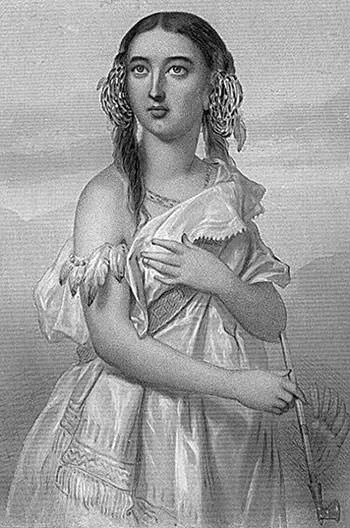
#2 SHE WAS THE DAUGHTER OF A POWERFUL LEADER OF MORE THAN 30 TRIBES
Pocahontas was the favorite daughter of Powhatan, who was a powerful ruler of the tribal nation of Powhatan, which consisted of more than 30 Algonquian-speaking tribes. The Powhatan are the indigenous people of eastern Virginia region and they are commonly known as the Virginia Algonquians because of their language. The mother of Pocahontas has not been named or mentioned a lot in any historical document and is therefore believed to be of low status. It is often believed that her mother was the first wife of Chief Powhatan and she died while giving birth to Pocahontas. Not much is known about the childhood of Pocahontas. As the daughter of Chief Powhatan, she may have had more luxuries than her peers. However, she still had to learn work done by women of the tribes like farming, cooking, collecting herbs, etc.
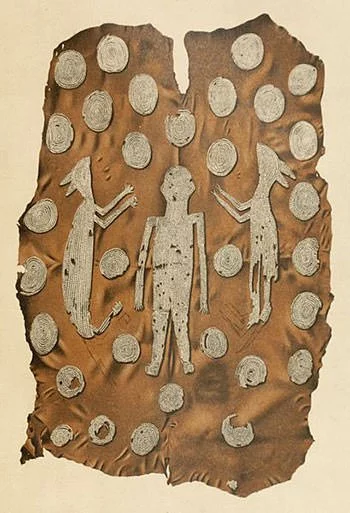
#3 MOST PROBABLY SHE DIDN’T SAVE CAPTAIN SMITH FROM BEING BLUDGEONED TO DEATH
Captain John Smith, along with around 100 other English settlers arrived in Virginia in May 1607. They built a fort on a peninsula by the river James and had a friendly relationship with some natives and hostile with others. In December 1607, during a hunting trip near river Chickahominy, Captain John Smith was captured by Opechancanough, who was the younger brother of Powhatan. He was then brought to Werowocomoco to meet the chief. What followed after that is highly disputed and hotly debated among historians. According to Smith, his head was rested on a stone and his brain was to be bludgeoned. However, Pocahontas, the dearest daughter of the chief, “got his head in her arms, and laid her own upon his to save him from death”. Chief Powhatan then decided that Smith should live.
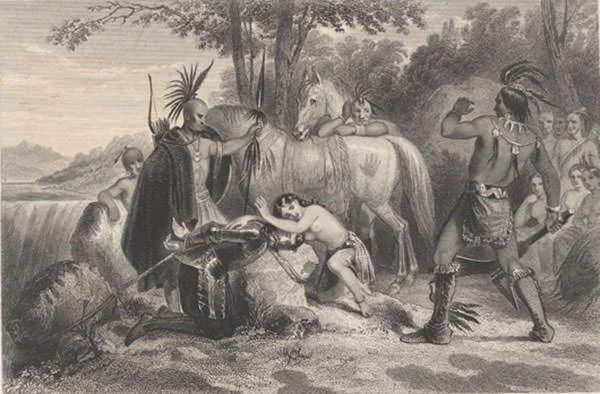
Most modern historians believe that the tale of Smith is a fabrication. Some also believe that his life was not under threat and he misunderstood a three-stage ritual intended to adopt him into the confederacy. The sensational version was published during an upswing of violence against Native Americans probably to show them as dangerous people. Whatever might be the case, Captain Smith did spent some time with Pocahontas where the two tried to teach each other their languages.
#4 CAPTAIN SMITH CLAIMED THAT POCAHONTAS SAVED HIS LIFE TWICE
According to Captain Smith, Pocahontas saved his life not once but twice. In 1609, drought, starvation and disease had badly affected the colonists and they were desperate. They relied on the native Americans for food and in desperation, they threatened to burn Powhatan towns for food. Due to this situation, Chief Powhatan suggested a barter with Captain Smith. However, the negotiations collapsed and, according to Smith, Powhatan then planned an ambush and to execute Smith. Smith goes on to say that Pocahontas saved his life again by informing him of her father’s plan. This claim by Smith is also considered a fabrication by several historians. This is due to the fact that Smith makes no claim of Pocahontas saving his life in a letter he wrote around that time. The claims of Pocahontas saving his life twice are made in his 1624 book General Historie of Virginia, when the people who could have refuted them were already dead. On the other hand, some historians believe that the account of Smith is true and accurate. What is definitely known is that Smith was soon injured and returned to England. But, Pocahontas thought him to be dead.
#5 SHE WAS MARRIED TO A NATIVE NAMED KOCOOM
It is said that Pocahontas visited the English colonists, occasionally bringing them food. As tensions between the English colonists and the native Americans rose, both starting to take captives from the others camps. Pocahontas was sent along with a negotiator to make a deal. It is almost certain that she translated the advisor’s negotiations with the English and set the Native captives free. Pocahontas stopped coming to the English camp when she attained marriageable age. It is believed that Pocahontas married a native named Kocoom. Kocoom was probably a Patowomeck and had no political connections. It may be thus inferred that her marriage was not political and was out of choice. After one to three years of marriage, her husband seems to have disappeared. As he was a warrior, he may have been killed in action. Some historians believe that Pocahontas conceived a child from her first marriage.
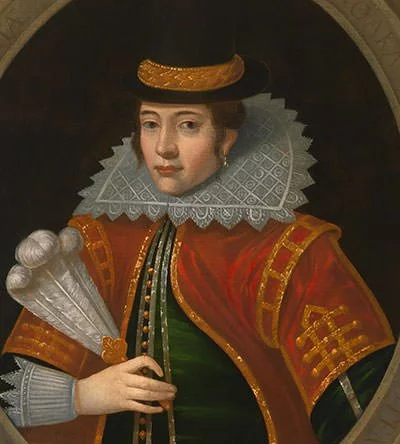
#6 SHE WAS HELD CAPTIVE BY THE ENGLISH COLONISTS
In 1613, when tensions between the colonists and the Powhatans escalated, Captain Samuel Argall made a plan to capture Pocahontas and use her as a bargaining chip. Due to her language skills, Pocahontas often acted as a go-between throughout the region. In 1613, she was on a visit to Patawomeck village of Passapatanzy where she was living under the protection of Weroance Iopassus. The Patawomecks and the Powhatans did not have the friendliest of relations. Samuel Argall pressured Iopassus to help capture Pocahontas in return for his support against the Powhatans. Iopassus tricked Pocahontas to board one of the English boats and thus she was made a prisoner of the colonists. The terms of her return included the release of several English prisoners as well as weapons and tools that were stolen. While the Powhatans released all the prisoners, the colonists were not satisfied with the number of weapons returned and therefore, kept Pocahontas captive.
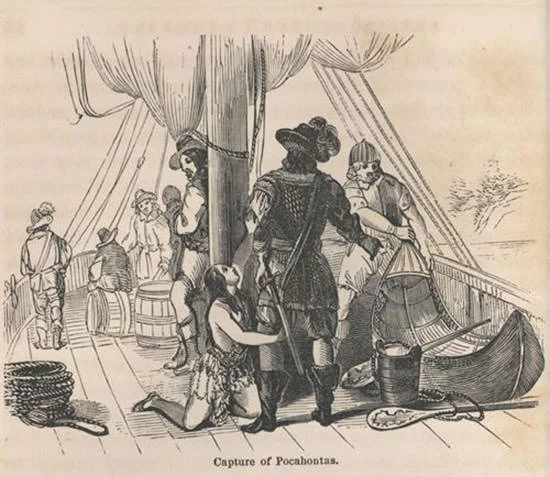
#7 POCAHONTAS MARRIED A COLONIST NAMED JOHN ROLFE
Converting the native “savages” to Christianity was a major goal of English colonists. Thus, during her time in captivity, Pocahontas was taught about Christianity and was encouraged to further improve her English. Pocahontas converted and, upon her baptism, she took the Christian name “Rebecca”. John Rolfe was a colonist who had traveled from England to Virginia. He lost his wife Sarah Hacker and his child during a shipwreck at Bermuda. Rolfe established the Varina Plantation farms and cultivated tobacco. The 28 year old widower became attracted to Pocahontas.
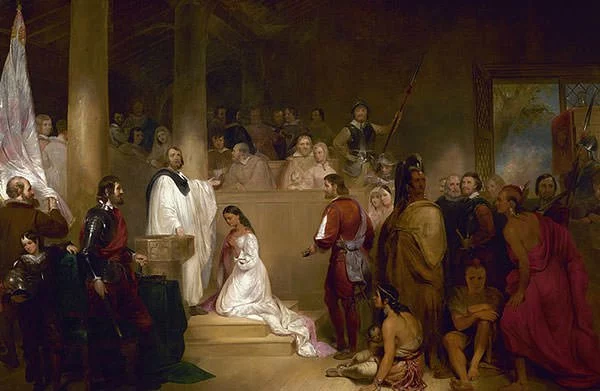
However, even though Pocahontas had accepted Christianity, Rolfe was worried about the moral repercussions of marrying a pagan. His apprehensions were mentioned in a letter he wrote to the governor, wherein he asked for his permission to marry Pocahontas for two reasons: one, he loved her very much, and second, he believed that by marrying her, he would be saving her soul. John Rolfe and Pocahontas got married on April 5, 1614. They had a son named Thomas in January 1615. Even though their marriage was controversial, it led to some sort of peace between the colonists and the native Americans.
#8 SHE WAS TREATED LIKE A PRINCESS IN ENGLAND
The marriage of Rolfe and Pocahontas gave an opportunity to the Virginia Company to showcase the result of the conversion of Pocahontas from her “savage” ways. The couple thus set sail for England in 1616. Eleven other Powhatans traveled with them. Pocahontas was seen at several social gatherings after she arrived in England. She was presented as a royal princess to the English public due to her birth as the daughter of a chief of a tribe. During this time, many English people falsely believed Powhatan to be the ruler of an empire in Virginia. This may be due to Captain Smith referring to her father as the “chief king” in his letter. Due to this, Pocahontas became an important person in England.
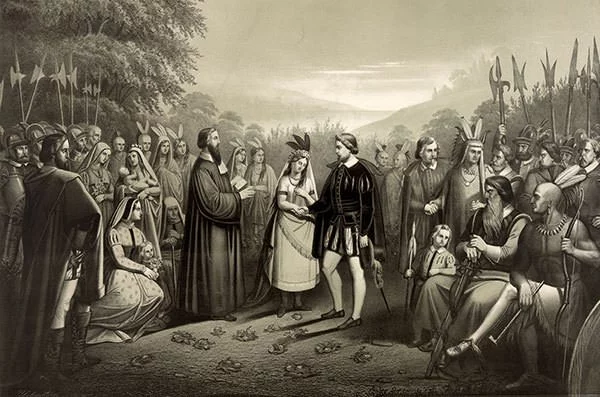
However, many historians also believe that Pocahontas was treated with curiosity rather than respect for her lineage. The Englishmen mostly referred to her as “the Virginian woman”. During her time in London, Pocahontas also learned that John Smith was alive. She was happy to see him but also expressed her anger at him for defaulting on promises he made to her and to her father.
#9 POCAHONTAS DIED AT THE YOUNG AGE OF 21
In March 1617, Pocahontas, her husband and son set sail for Virginia. However, shortly after leaving England, Pocahontas and her son Thomas became severely ill. Though her son survived, her health deteriorated and, shortly after that, she died. Her father Powhatan died in despair the following year. It is approximated that Pocahontas was 21 at the time of her death. The cause of her death was never determined. Though there are conspiracy theories according to which she was poisoned, it is more likely that she contracted pneumonia and that her native body didn’t have the built in resistance to counter it.
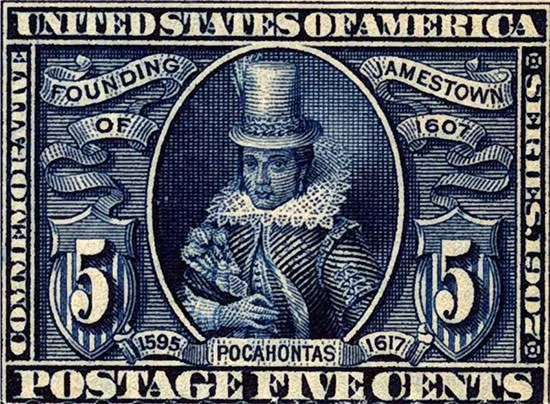
According to her husband, the last words of Pocahontas were “all must die, but tis enough that her child liveth”. Her funeral took place in St George’s Church in Gravesend on March 21, 1617. She was buried under the church’s chancel. However, the exact location of her grave is no longer known as the church was destroyed in 1727 due to a fire. To honor her memory, a bronze statue has been established at the church.
#10 POCAHONTAS CONTINUES TO ENJOY MASSIVE POPULARITY IN THE MODERN WORLD
After the death of Pocahontas, fanciful and highly romanticized representations were produced about her life. In most of them, she was romantically involved with Captain Smith even though there is no account of anything beyond friendship between the two. Recent research has led to a better reconstruction of the life of Pocahontas even though many details can never be known with certainty. Nonetheless, even in the popular culture of today, the story of Pocahontas is often romanticized and depicted according to the version established by Captain Smith. Pocahontas has been a constant feature in art, literature, films and plays over the years. Several movies have been built on her story including Captain John Smith and Pocahontas (1953); and a 1995 Disney animated feature film by her name. Moreover, numerous places, landmarks and products in the United States have been named after her. Among other things, in 1907, Pocahontas became the first Native American woman who was honored on a United States stamp.

